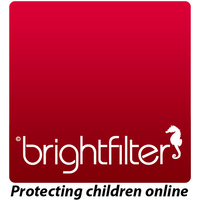Top tips to help promote safe social networking for children

Brightfilter, a leading supplier of internet security solutions for schools and the home, has issued ten tips for safe social networking. The advice is designed to promote safe, sensible use of social networking sites by helping parents to protect their children from the serious dangers that the internet can pose.
Top ten tips for safer social networking are:
1. Educate – speak to your child about the potential dangers associated with the internet. It is important they understand that a stranger approaching them online is just as hazardous as being approached in real life. Make sure they realise that online ‘friends’ could easily be dangerous individuals that have created a false identity.
2. Take control – if your child has not yet set up a profile on a social networking site and wants to join one, then take charge and create the profile for them. This will enable you to control the privacy settings and what information is on view.
3. Check privacy – if a child already has a profile on a social networking site, check that they have the privacy correctly set up. An easy way to check if their profile is private is to type in their name on a search engine. If their details are listed in the results then the highest level of privacy is not enabled, meaning that anyone can view certain information.
4. Amend privacy – to prevent your child’s profile from being seen by people they are not friends with, it’s advisable to spend time investigating the site’s privacy settings. Each social network has different ways of managing these, so make sure you check each one. If stuck, instructions can often be found in the site’s help section or by searching online. Other parents who are familiar with the site will also be able to offer help too.
5. Limit friends – limit the number of friends that your child is allowed on the site. This number is dependent on individual circumstances, but as a guide our suggestion is 40. This will help children carefully consider each person before befriending them online and prevents them accepting friend requests from strangers.
6. Monitor friends – make sure that your child genuinely knows all of their online friends to prevent strangers or people they don’t know that well from accessing their profile.
7. Create your own account – if you haven’t already, set up your own account on the sites your child uses. Not only will this enable you to see how they work and the sort of things kids use them for, but you will also be able to see who they are friends with, what photos they are uploading and who is writing what on their profile.
8. Keep the PC public – only allow your child to use the internet in the presence of someone else, not shut away in their bedroom. Make sure the family computer is used in a public place such as the living room, where people can see the screen.
9. Accompany them – if your child insists on meeting a new online friend, ask for full details about them, including any message exchanges and photos. However, this does not necessarily prove their true identity, so if you decide to allow the meeting to go ahead, go with your child and meet the person in a public place.
10. Use parental control software – if you have children younger than 13, or do not want social networks to be used at all, you can install software that will block access to the sites completely. Brightfilter Parental Control software can be used to do this, as well as restrict internet access according to the time of day, preventing kids from engaging with strangers online late at night.
To try the free trial of Brightfilter Parental Control visit brightfilter.com/parentalcontrol.

